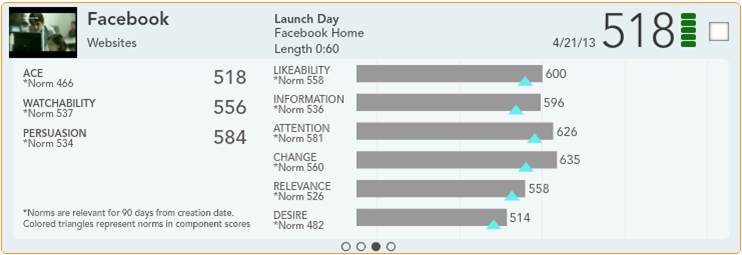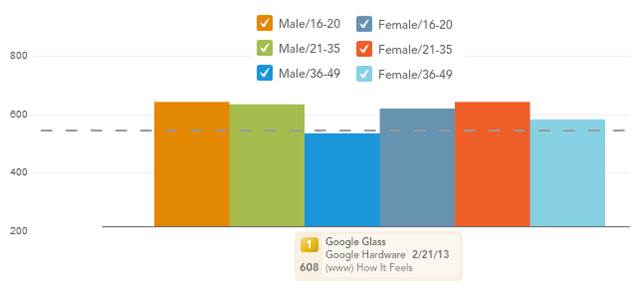Interesting post on Adweek yesterday poses the question – Which brand turns people off in an “Ad Smackdown: Facebook vs Google”. We have these, along with many others from both brands – and here’s how one thousand consumers across the nation scored them.
The first of the four posted by AdWeek aired in October of last year. The ad boasts high Attention and Relevance scores and of all the Facebook ads we’ve scored, has the highest Emotional Sentiment score at 43. When asked what the single best thing about the ad was, “the brand and everything it stands for” was the most common response. Every gender/age break scored the ad above the category norm for websites but Females 16-20 scored it more than 50 points higher than the second highest scoring group (Females 21-35).
This ad originally aired in December of 2009, and then a slightly modified cut made an appearance during 2010 Super Bowl. It’s no surprise that this tear-jerking ad had a high Emotional Sentiment score of 60, well over the Overall norm of 47. The ad elicited an incredible 317 optional verbatim (qualitative comments) responses from consumers that tested it and had through-the-roof component scores in the areas of Likeability, Attention, Change, Relevance and Desire. Younger viewers were most impressed–both Males and Females 21-35 gave the highest scores. As an added bonus, the word “google” was used by 40 percent of the verbatim respondents, an exceedingly high brand identification percentage.

But Google has had many, many high scoring and emotive ads since then – both online and on television. So, in terms of which brand “turns people off” as posed by AdWeek – are we only judging based on these examples?
Facebook aired four new ads last month, “Launch Day” being the highest scoring spot among the general population. This ad connected best with Males 16-20, who scored the ad 30 percent higher than the norm and almost 80 points higher than the next gender/age group, Females 21-35. The ad had particularly high Attention and Change scores, and while Information score was also well above norm, the verbatim responses identified some confusion among consumers about what the new product does.

Of the four ads represented in the Adweek article, this ad certainly has the broadest demographic appeal. Both the longest ad at two minutes 15 seconds and the highest-scoring ad of the group, “How It Feels” received high Information, Attention and Change scores and scored 13 percent above the Computer Hardware norm. The ad skewed young – Males 16-20 and Females 21-35 both gave the ad the same score of 644 (almost 100 points above norm).

Again, an interesting question posed by Adweek between these two behemoth brands – each an innovator in its own right – but I think the question that could be posed is this: Which brand has successfully transcended a strong online presence to capture our attention on the main screen – but that is for another day.
Click here to view the full Adweek article.